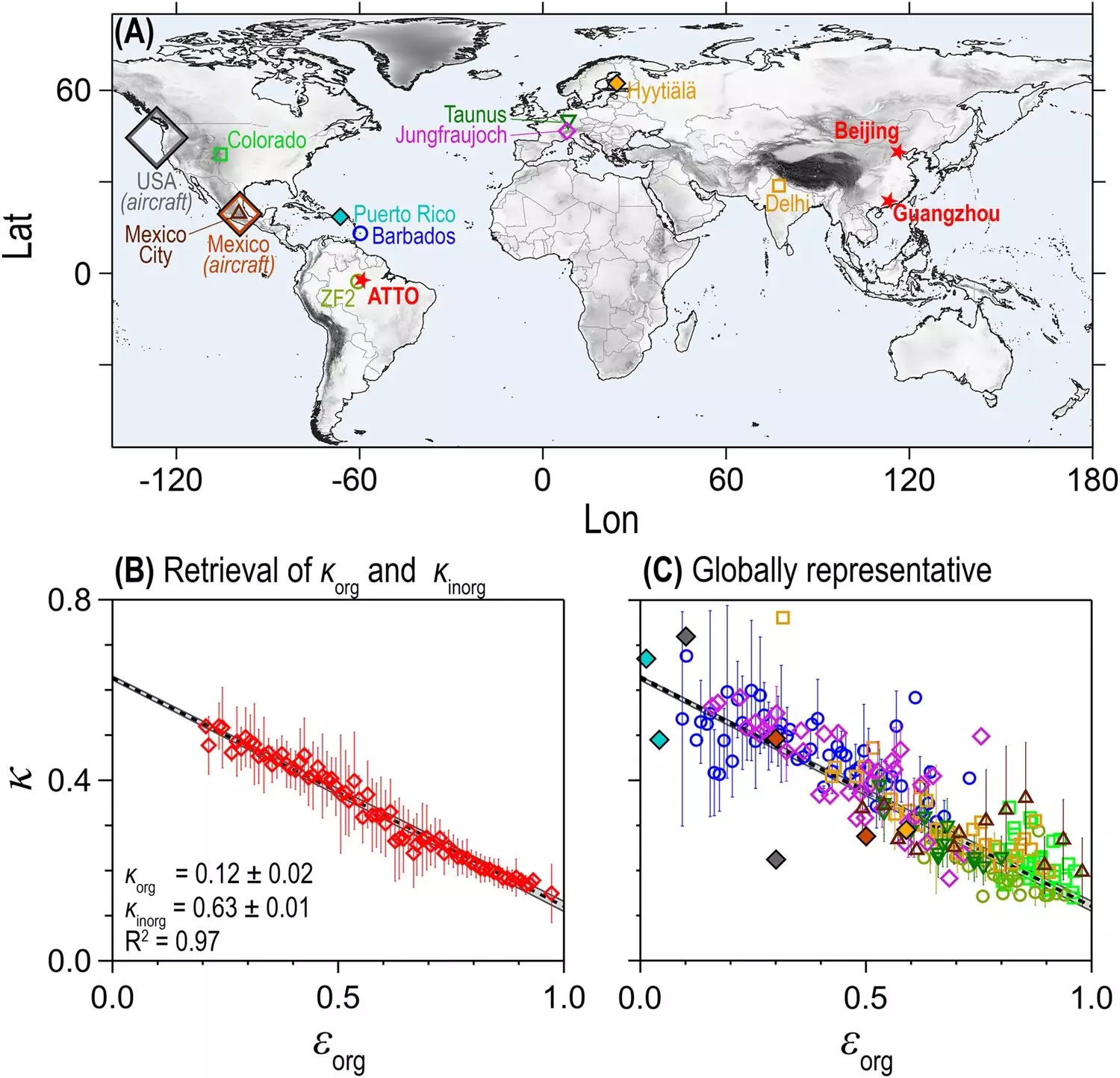The impact of aerosol particles on climate is heavily influenced by their capacity to hold water in the atmosphere, known as hygroscopicity. Research conducted by an international team of scientists from the Max Planck Institute for Chemistry (MPIC) and the Leibniz Institute for Tropospheric Research (TROPOS) has shed new light on the relationship between aerosol chemistry and hygroscopicity. By analyzing a vast amount of data from measurement campaigns around the world, the team discovered a simple linear formula that can accurately predict hygroscopicity based on the presence of organic and inorganic materials in aerosol particles. This breakthrough has significant implications for climate modeling and our understanding of aerosol particles’ impact on the climate.
Aerosol particles are composed of a complex mixture of organic and inorganic materials, making it challenging to determine their hygroscopic properties accurately. However, the research team, led by Mira Pöhlker, successfully established a simple linear formula that considers the share of organic and inorganic materials in aerosols. This breakthrough offers a more practical approach to incorporating hygroscopicity into climate models, reducing the uncertainty caused by the chemical complexity of aerosol particles.
To validate their findings, the researchers analyzed data from 16 measurement campaigns conducted between 2004 and 2020. These campaigns covered diverse regions and climate zones, ranging from the Amazon rainforest to heavily polluted metropolitan areas in Asia to the pine forests of the Arctic Circle in Europe. Through their analysis, the team derived a linear formula that relates hygroscopicity (κ) to the share of organic materials (κorg) and inorganic ions (κinorg). Despite the intricacies of organic matter, the formula successfully captured its hygroscopic properties.
The derived formula revealed average values for hygroscopicity when considered globally: κorg = 0.12 ± 0.02 for organic particles and κinorg = 0.63 ± 0.01 for inorganic ions. To test the formula’s effectiveness, the researchers employed the global aerosol climate model ECHAM-HAM. The results demonstrated that simplified assumptions about hygroscopicity could be made without introducing significant uncertainties into the model. This breakthrough paves the way for more reliable investigations and forecasts concerning climate change.
The success of this study was made possible by international collaborations and comprehensive observations carried out at research stations worldwide. One such location is the ATTO observatory in the Brazilian rainforest, where long-term data collection allowed for a deeper understanding of atmospheric aerosols. The interactions between aerosol particles, solar radiation, and clouds remain a significant challenge in climate modeling. The study’s findings contribute to filling in some of the gaps in our knowledge of aerosol hygroscopicity, further enhancing the accuracy of climate projections.
Aerosol particles play a vital role in climate change through their impact on the scattering of solar radiation and the formation of cloud droplets. Understanding their hygroscopicity is crucial for accurately modeling and predicting changes in climate. By simplifying the relationship between aerosol chemistry and hygroscopicity, this study offers a more reliable and practical approach to incorporating aerosol effects into climate models. As a result, climate change investigations and forecasts will become more trustworthy, aiding policymakers in formulating effective mitigation strategies.
The relationship between aerosol chemistry and hygroscopicity has long been a challenge in climate science. However, the research conducted by the Max Planck Institute for Chemistry and the Leibniz Institute for Tropospheric Research has brought us one step closer to understanding this complex relationship. By developing a simple linear formula based on the presence of organic and inorganic materials in aerosol particles, the study provides a practical framework for incorporating hygroscopicity into climate models. This breakthrough will undoubtedly improve our ability to predict and respond to the impacts of aerosol particles on the Earth’s climate system.


Leave a Reply